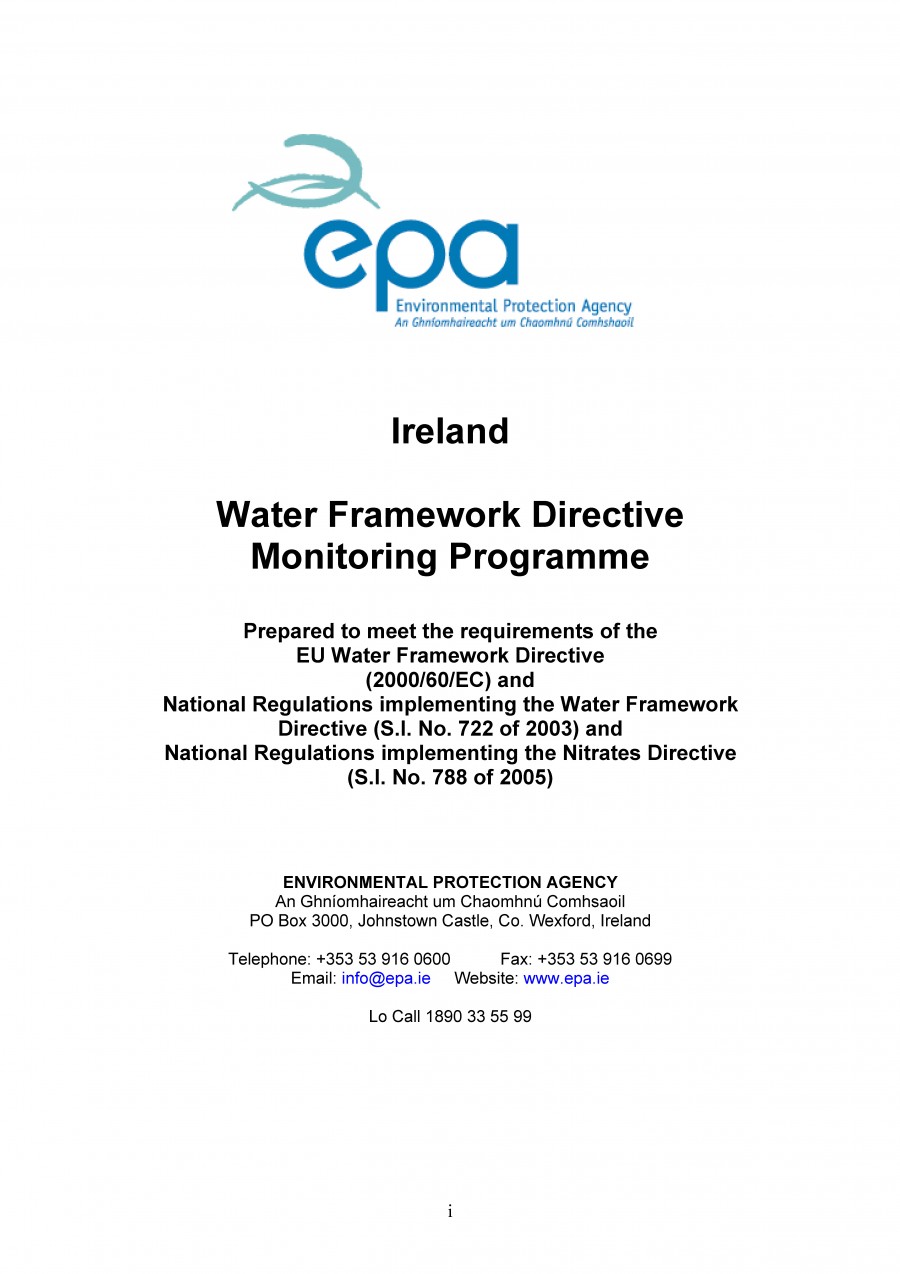Monitoring Programme 2009-2015

| Version | |
| Download | 58 |
| Stock | ∞ |
| Total Files | 7 |
| Size | 8.65 MB |
| Create Date | 29th August 2009 |
| Last Updated | |
A brief summary is given herein of the national WFD monitoring programme, the development of which involved consultations with the River Basin Districts through
their lead local authorities, with local authorities in general, with the relevant State bodies and with others. The programme is set out in detail in the report.
The programme lists the specified authorities to implement the monitoring programme and there is a statutory obligation on the nominated authorities to execute the monitoring assigned to them. The principal rationale determining the assignment of a particular monitoring responsibility to a Public Authority was the established expertise, competency and capacity of the particular Public Authority to perform the task. For the majority of the biological, hydromorphological and physicochemical parameters, the assigned Public Authorities have been involved in the assessment of these parameters for several decades. Due to a lack of existing capacity and expertise within the Public Authorities in Ireland, a small amount of the biology and hydromorphology as well as a significant amount of the chemical monitoring may need to be outsourced, at least for an initial period. For practical purposes it is desirable that the outsourcing be as centralised as possible. With this in mind it is proposed that the EPA arrange and manage the
outsourcing in freshwaters and the Marine Institute the outsourcing of samples from transitional and coastal waters.
The structure and content of the monitoring programme represents the outcome of a major research and development process involving various sub-groups under the
auspices of the National Technical Co-ordination Group for the WFD and the outcome of the consultation process referred to above.
As required by the Regulations, the programme sets out the ‘nature, frequency and extent’ of the monitoring to be implemented, to be operational 22 December 2006. While the development of the programme has considered monitoring requirements at water body level, the listings of stations as set out in the report on the proposed programme are indicative, and will be subject to amendment periodically based on experience and on new developments, while keeping to the overall nature, frequency and extent of the programme as set out in this report.
| File | Action |
|---|---|
| Summary report on the Characterisation and_analysis Irlands RBDs.pdf | Download |
| EPA Water WFD Monitoring Programme Main Reportpdf | Download |
| Cover from epa_water_wfd_monitoring_programme_main_report.jpg | Download |
| Appendix 10.4 wfd_groundwater_monitoring-appendix-10-4-v1-4-2.xls | Download |
| Appendix 8.1 - eu wfd monitoring programme for lakes version 1.101.xls | Download |
| Appendix 7.1 Rivers Monitoring Programme version 1.4.3 May 2007.xls | Download |
| Appendix 2.1 priority Substances and Relevant Pollutants list for surface water and groundwater.xls | Download |
Download





